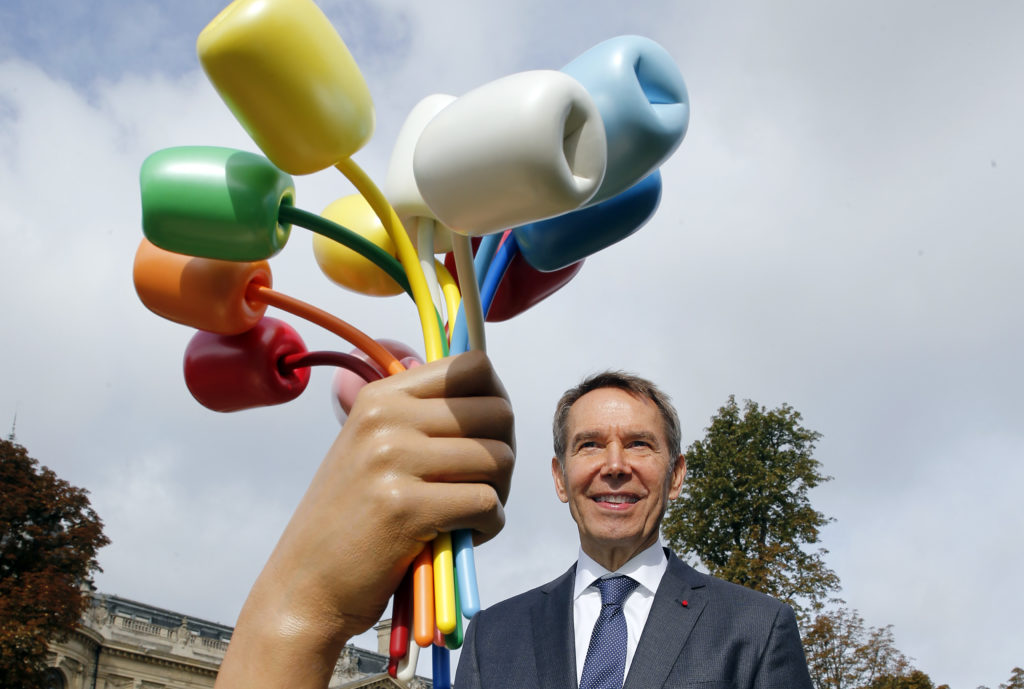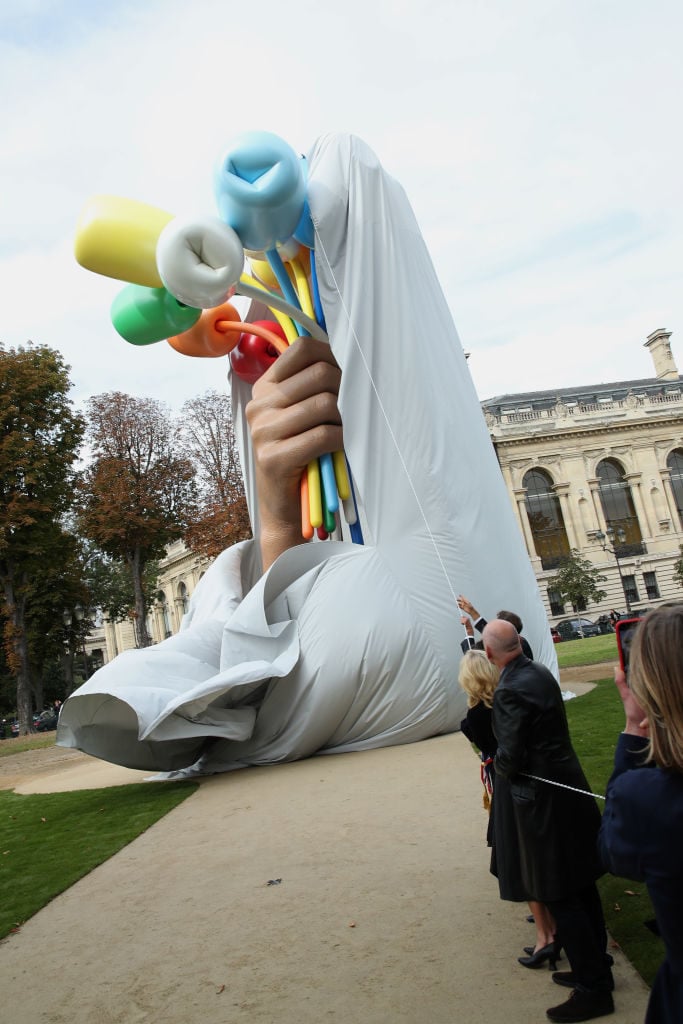On View
Jeff Koons Has Finally Unveiled His Controversial Gift to Paris, and the French Public Is Not Entirely Thrilled
The project, an homage to the victims of the 2015 terror attacks, has been contentious from the start.

The project, an homage to the victims of the 2015 terror attacks, has been contentious from the start.

Naomi Rea

Jeff Koons’s gift to the city of Paris, an homage to the victims of the November 2015 terror attacks that left 131 victims dead, has finally been unveiled.
While the city’s mayor, Anne Hidalgo, expressed hope that the colorful, monumental sculpture of a hand holding a bouquet of tulips would be accepted without controversy, some French citizens, including many in the art world, remain unhappy about the project, which has been a source of consternation since it was first announced in 2016.
The 41-foot bronze, stainless steel, and aluminum work was revealed on Friday, October 4, in the gardens of the Champs-Elysées, between the Petit Palais museum and the Place de la Concorde, not far from the US Embassy. At the inauguration, Koons reiterated that the sculpture was “a symbol of remembrance, optimism, and healing,” adding that it was inspired by a 1958 lithograph by Pablo Picasso titled Bouquet of Peace.
But not everyone is happy about the gift, which has been controversial from the beginning. One concern was the originally suggested location, just outside the Palais de Tokyo: the supports that would have been necessary to prop up the 67-ton work would have effectively made the museum’s basement galleries useless. A resolution was reached when an alternate location was found.
Many also took issue with the fact that Koons donated only the idea for the work, but left its execution and installation— estimated at the time to cost €3.5 million—to the French.

The unveiling of Jeff Koons’s Bouquet of Tulips in Paris. Photo by Bertrand Rindoff Petroff/Getty Images.
Ultimately, the production company behind the work, Noirmontartproduction, worked with Le Fonds pour Paris, the city’s foundation, to raise enough private money for the execution and installation. Among the donors to the project are the billionaire art collectors Kenneth C. Griffin and Bernard Arnault, along with Evercore investment firm CEO Ralph Schlosstein. (Schlosstein is the husband of Jane Hartley, the US ambassador to France who commissioned the work from Koons.) Additionally, donations came in from Leon and Debra Black, Leonard Lauder, and others.
When the project ran $1 million over budget, Koons stepped in to bear the additional costs alone. The artist has also promised to give 80 percent of any royalties he receives from commercial products depicting the sculpture to the families of the victims. The remaining 20 percent will fund the maintenance of the work.
Yet one of the victims’ groups, Life For Paris, remains dissatisfied. The association told the French publication Les Jours that they were “shocked” to learn that the work would be financed by tax-free donations, and therefore pose a burden to taxpayers.
Others have complained on separate grounds. Among them is a group of 24 prominent French artists, museum directors, and culture workers who wrote an open letter in January calling the project “opportunistic and even cynical.”
The initiator of the letter, the gallerist Stéphane Corréard, reiterated his views in a recent interview in the French publication Le Point. “In the world of contemporary art, very few people approve of the Koons operation,” he said. “A survey conducted by Le Quotidien de l’Art of readers, gallery owners, and collectors was poignant: 98 percent disapproved of the project. We have not even heard the curators of the last two Jeff Koons exhibitions in France take his side, and this itself is revealing.”
Très heureuse de dévoiler le #BouquetOfTulips de @JeffKoons dans le jardin des Champs-Elysées. Un beau cadeau du peuple américain à Paris, un magnifique symbole de liberté & d’amitié. Emerveiller, émouvoir, mais aussi bousculer & faire réfléchir, c’est le rôle de l’art. @cgirard pic.twitter.com/b9kfDLl1Gg
— Anne Hidalgo (@Anne_Hidalgo) October 4, 2019
Hidalgo, who accepted the project on behalf of France, remains supportive. After its unveiling, she tweeted that the work was a symbol of liberty and friendship. The role of art, she wrote, is “to amaze, to move, but also to shake[things] up and make people think.”
Other Twitter users have not been as magnanimous. “Jeff Koons is a bit like the Ikea of modern art,” one wrote. “You can find it everywhere, it’s ugly, not very durable, and yet everyone acts as if it were essential.”